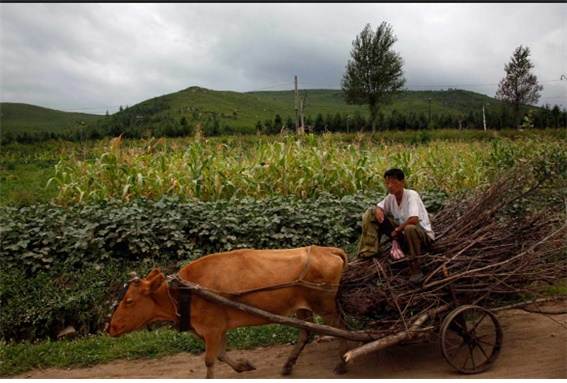Livestock in North Korea, creating new opportunities for the Netherlands? (II)
Two leaders, Donald Trump and Kim Jong-un both arrived in Singapore ahead of the 2018 North Korea-United States Summit on June 12.
Following Part I story of North Korean livestock industry, we continue on “Lacking feed causes increasing number of grass-eating livestock animals” and “Death penalty for slaughtering cattle without approval”.

Monthly Chuksan, magazine on livestock in South Korea published a column on North Korea's livestock industry : “The possibility of creating new opportunities for the South Korean livestock industry.” With permission of the magazine, we hereby summarize and share the second story.
Part II.
Lacking feed causes increasing number of grass-eating livestock animals
North Korean stock breed is categorized as grass-eating animal/pig/poultry.
The working cows are raised mainly on collective farms nationwide, and the milk cows are very limited. The livestock policy encourages to have more grass feed animals due to the lack of grain feed and the economic difficulties. Therefore more goats, sheep, rabbits are raised than larger livestock animals in North Korea. The stock breed, which accounts for a large portion of the North Korean livestock industry, is pigs, which are raised in most urban and rural families. The rate of raising chickens is the highest among poultry. Duck, goose and quail are following.
Due to the lack of grain feed and protein feed, national farms use mixed feed mainly. In rural areas, various food crops are encouraged to be used. In addition, individual families raise livestock by using by-products of food or by-products of vegetable such as sweet potato leaves and stems.
Death penalty for slaughtering cattle without approval
Recently in North Korea, market economic activities have been settled down in the household economy. Demand for livestock products in the market continues to grow, but supply is not catching the pace.
Distinctive characteristics of the North Korean livestock market are as follows;
First, beef is not easily found in the market. Cows are bred for the purpose of working, not for eating. Due to the low level of mechanization of farming villages and the lack of fuel for machines, cows account for 80 percent of agricultural power in North Korea. Therefore on farms in North Korea, cows have only a duty to manage for agricultural activities and the right to dispose of them belongs to state agencies. If disposed without the appropriate authority's approval, it could lead even to the death penalty.
Second, bones are included in the meat. In the market of North Korea, meat costs include the weight of bones and price for meat-only in this way is doubled.
Third, there is no price per part of meat in sales. All livestock products are classified only as offal/head/feet, and the meat of the rest of the parts are sold at the same price without classification.
Fourth, there are very few milk and dairy products on the market. It was tried to raise a larger number of goats, but the production volume of goat milk is very limited as it is impossible to guarantee feeding. Especially milk from cows is hard to be found. And very few dairy products are found on the market such as milk powder, butter and cheese; they are all imported from China and Russia. Therefore, soy milk is used as important nutritional supplement for North Korean children.
Fifth, the supply is absolutely insufficient for the demand for livestock products. The consumption of livestock products per capita in North Korea is only 12% of per capita consumption in the South Korea.
| Category | South Korea | North Korea |
|---|---|---|
| Beef | 10.3 | 0.88 |
| Poultry (Chicken, duck etc) | 11.5 | 1.76 |
| Pork | 20.9 | 4.7 |
| All meat products | 42.7 | 7.34 |
| Dairy (Milk) | 71.3 | 3.74 |
| Dairy (Egg) | 242(14.5kg) | 78(4.7kg) |
*This table is clipped from the original column in the magazine ‘Monthly Chuksan’.
The column is concluded talking about reunification of North and South Korea and what it does mean to create a new livestock market. It urges the development of agriculture and livestock through exchanges of technology between the two Koreas. It also points out that the principle should be to develop into a market-friendly project aimed at international markets.
With all the attention on what will happen in North Korea, we hope that the advanced Dutch agricultural and livestock technology can contribute to the economic development of agriculture in North Korea one day.